The new fieldbus-based control strategy and network architecture will revolutionize existing instrumentation and control systems. Based on the essential characteristics of fieldbus technology, the impact on the traditional distributed control system dcs is analyzed. Combined with the network structure characteristics of DCS, three implementation methods of fieldbus integration in DCS are given.
Industrial control has evolved from the early local control and centralized control to the current distributed control (DCS). In the past 20 years, the process industry has invested heavily in DCS systems and related instrumentation, and the application of DCS systems. The result was affirmed by the user. The 4-20 mA signal is the most essential feature of the interconnection of DCS systems and field devices. This is a major advancement in the development of control systems and instrumentation.
However, nowadays, digitalization and networking have become the main direction of today's control network development. It is recognized that traditional analog signals can only provide raw measurement and control information, and the ability of smart transmitters to attach information over a 4-20 mA signal is limited by its low communication rate, so the mechanism of the entire process control system Digitalization and networking should be an inevitable trend in its development.
The fieldbus provides a fully digital, two-way, multi-node communication link between intelligent field devices and automation systems. The advent of fieldbus has facilitated the digitization and networking of field devices and has made field control more powerful. This improvement brings the openness of the process control system, making the system a comprehensive control network with measurement, control, execution and process diagnostics.
1 field bus impact on traditional DCS
The impact of fieldbus on traditional DCS comes from its technical characteristics that are inherently superior to DCS systems. According to the definition of IEC and Fieldbus Foundation FF, fieldbus technology has the following five main features: 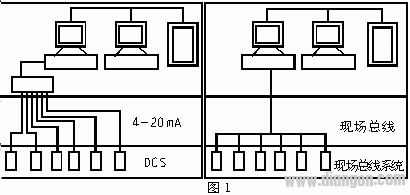
1 digital signal completely replaces 4-20mA analog signal;
2 to make the basic process control, alarm and calculation functions completely distributed on site;
3 to increase non-control information, such as self-diagnosis information, configuration information, and compensation information;
4 to achieve the unification of site management and control;
5 Realize system openness and interoperability.
Fieldbus technology is not only a communication technology, it actually integrates the essence of technologies such as intelligent instrumentation, computer networks and open system interconnection (OSI). All of these features make fieldbus control systems (FCS) based on fieldbus technology superior to traditional DCS systems: 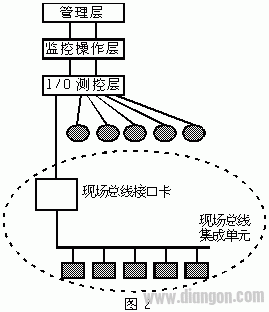
1 system structure is greatly simplified, and the cost is significantly reduced;
2 On-site equipment autonomy is strengthened, and system performance is comprehensively improved;
3 improve the reliability and accuracy of signal transmission;
4 Realize a fully distributed, fully digital control network;
5 users always have system integration rights.
These advantages can be verified from the comparison of the network structure of the DCS and the fieldbus system in Figure 1.
2 Fieldbus integrated in DCS system is the development trend of current control network
Although users welcome the structural improvements to the control system, they do not want to make major changes to their existing instrumentation systems. At the beginning of the development of fieldbus, most users are more inclined to gradually add and replace their existing instrumentation systems; on the other hand, the disappearance or complete replacement of DCS systems and their instruments, for cost or manpower It is also unreasonable. The most feasible solution at this stage is to consider how to make the fieldbus work as much as possible with the traditional DCS system. This integrated solution can be flexibly configured for a wider range of practical applications.
3 field bus integration on the DCS system I / 0 bus
In the DCS structure system, the top-down can be roughly divided into three layers: management layer, monitoring operation layer and I/O measurement and control layer. On the I/O bus of the I/O measurement and control layer, there are DCS controllers and various I/O cards. I/O cards are used to connect live 4-20mA devices, discrete or PIC and other live signals, DCS. The controller is responsible for on-site control. 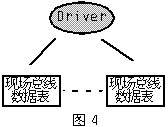
Figure 2 shows the schematic of the integration of the fieldbus on the I/O bus of the DCS system. The key is to hang on the DCS I/O bus through a fieldbus interface card, and realize the mapping of the data information in the fieldbus system to the corresponding data information on the original DCS I/O bus, such as basic measurement values ​​and alarms. Values ​​or process settings, etc., make the fieldbus seeing information from the DCS controller as if it were from a traditional DCS device card. This enables fieldbus technology integration on the I/O bus.
This solution can be used for small-scale applications where the DCS system has been installed and operated stably, and the fieldbus is first introduced into the system; this solution can also be applied to the plc system.
The advantage of this scheme is that the structure is relatively simple, and the disadvantage is that the integration scale is limited by the fieldbus interface card. 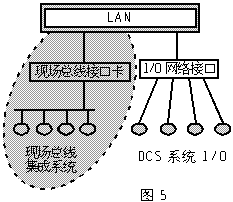
The DCS system DeltaV from Fisher-Rosemount uses this integration solution. The DeltaV system has specially developed an interface card designed with this function in its I/O card - fieldbus H1 communication module (31.25kbit/s), successfully integrating fieldbus technology into the DeltaV system. Connected to the fieldbus instrument, greatly saving installation, operation and maintenance costs, the same controller is compatible with H1 and traditional I / O modules, which is beneficial to the traditional control mode. The transition and transition to the fieldbus control mode.
The system structure of DeltaV is shown in Figure 3.
In the fieldbus H1 communication module of the DeltaV system, there is a specific driver for realizing the mapping of the fieldbus system data information and the corresponding information on the I/O bus. The functional block diagram is shown in FIG.
4 field bus integration in the DCS system network layer
In addition to the integrated solution on the I/O bus, the fieldbus system can be integrated on the higher layer, the DCS network layer. In this scheme, the fieldbus interface card is not hung on the I/O bus of the DCS, but on the upper LAN of the DCS, and its structure is as shown in FIG. 5.
In this scenario, fieldbus control execution information, measurements, and field instrument control functions can all be viewed and modified at the DCS operator station. It has the advantage that some of the control and calculation functions that must have been done by the DCS host computer can now be decentralized to the field instrument implementation and can be used to obtain relevant parameters or data information on the DCS operator interface; another advantage is that it is not required. Changes to the DCS control station have less impact on the original system. 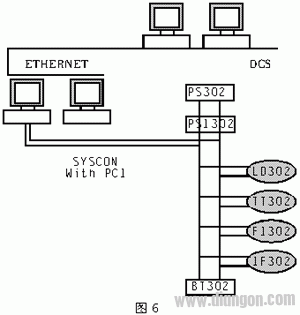
This integration scheme is also used in engineering practice. For example, Smar's 302 series fieldbus products can integrate their fieldbus functions in the DCS system network layer. The specific integration scheme is shown in Figure 6.
5 Fieldbus is integrated with the DCS system through the gateway. If the DCS system and the fieldbus system are running in parallel in one factory, you can also connect the two through a gateway (as shown in Figure 7), install the gateway to complete the DCS system. Information transfer between the fieldbus high speed network. In this configuration, the information of the DCS system can be obtained and displayed on a new operator interface. A large number of H1 low speed buses can be installed by using a throwing bridge. The fieldbus interface unit provides control coordination, alarm management and short-term trend collection.
Parallel integration of fieldbus and DCS completes the integration and control of the entire plant's control system and information system, and can interconnect the Infranet and Inernet through the Web server. The advantage of this scheme is that it enriches the information content of the network and facilitates the comprehensive advantages of data information and control information. In addition, in this integration scheme, the fieldbus system and the DCS system integrated through the gateway are independent of each other. .
6 Conclusion
In summary, we believe that the fieldbus system will be widely used in process industry control. By making some necessary modifications to the process control system, the fieldbus technology will be introduced into the DCS, which will bring a lot of benefits to users; On the other hand, even though most of the continuous control loops will be completed by the fieldbus system, the DCS system will still play an important role in many control situations such as real-time requirements. The coexistence of fieldbus and DCS systems at this stage will give users more choices to achieve a more reasonable control system.
A flexible printed circuit board is a type of PCB designed to meet the needs of flexible electronic circuits. Originally designed flexible printed circuits to replace traditional wiring harnesses.
Flexible printed circuits are produced using flexible laminates. The flexible laminate holds the conductive foil as well as the dielectric substrate. Flexible circuit boards can be three-dimensionally routed and can be appropriately shaped to fit the available space.
Flexible PCB,Flexible Circuit Board,PCB Production Process,PCB Process Technology,Circuit Board Manufacturing Process
Huizhou Liandajin Electronic Co., Ltd , https://www.ldjpcb.com